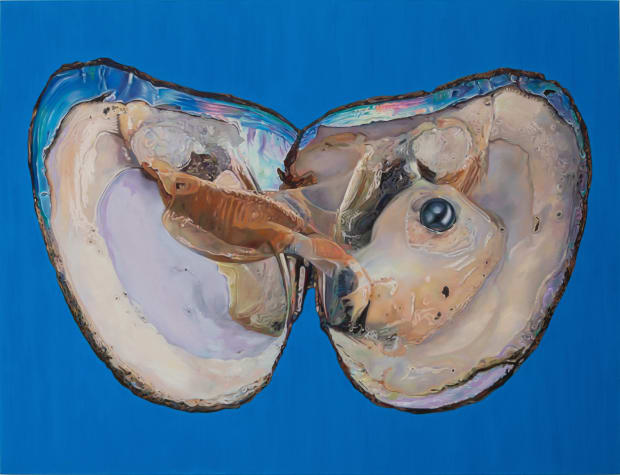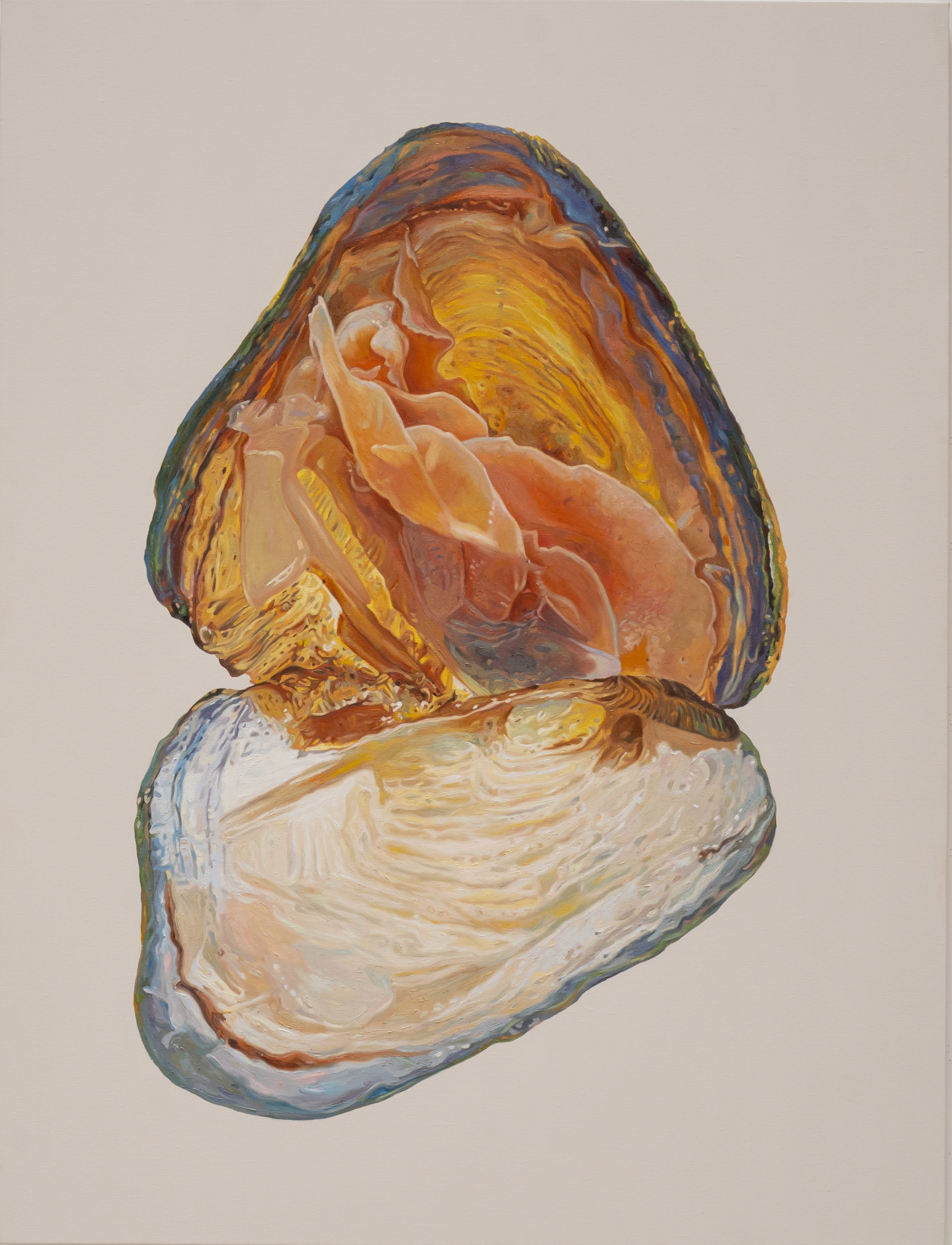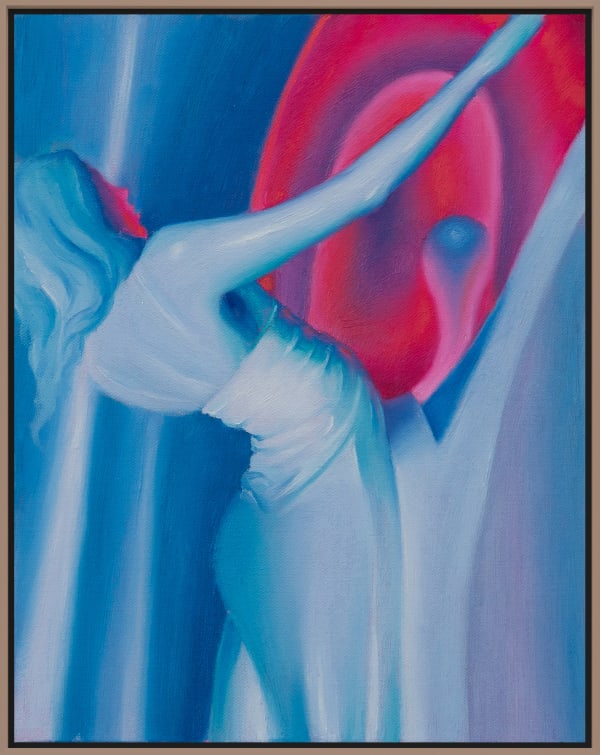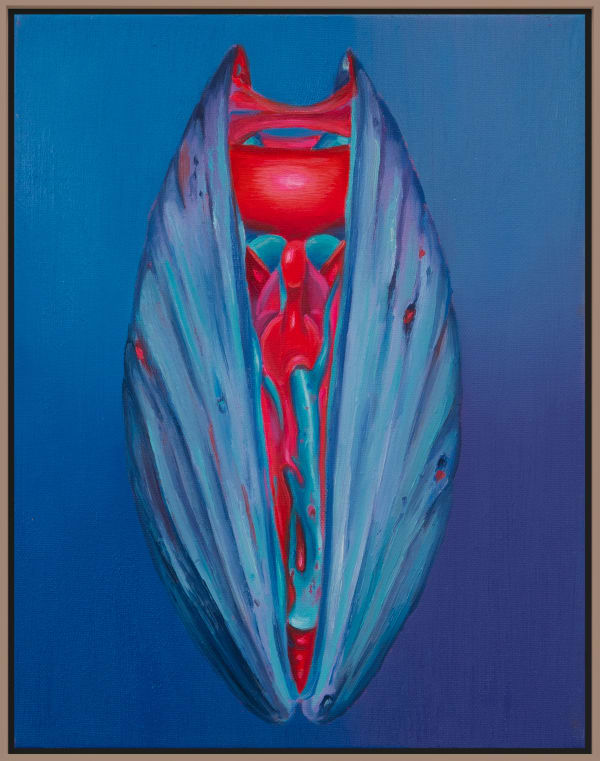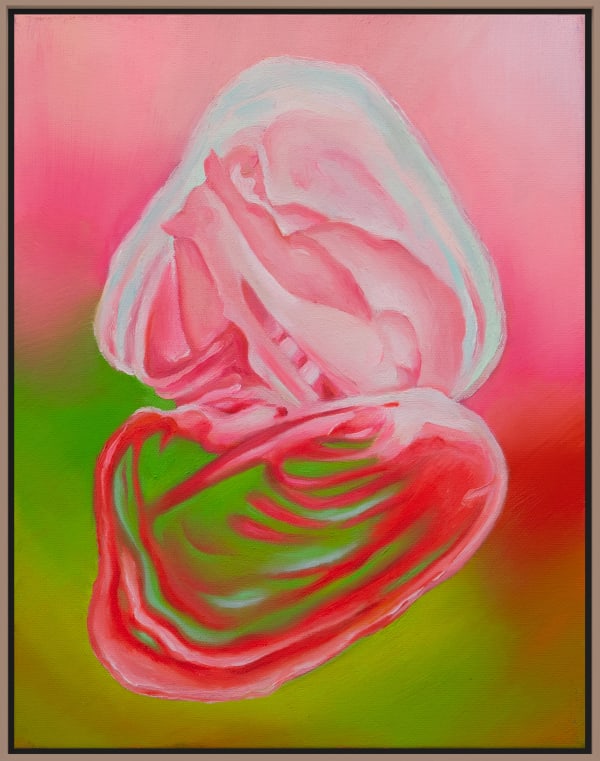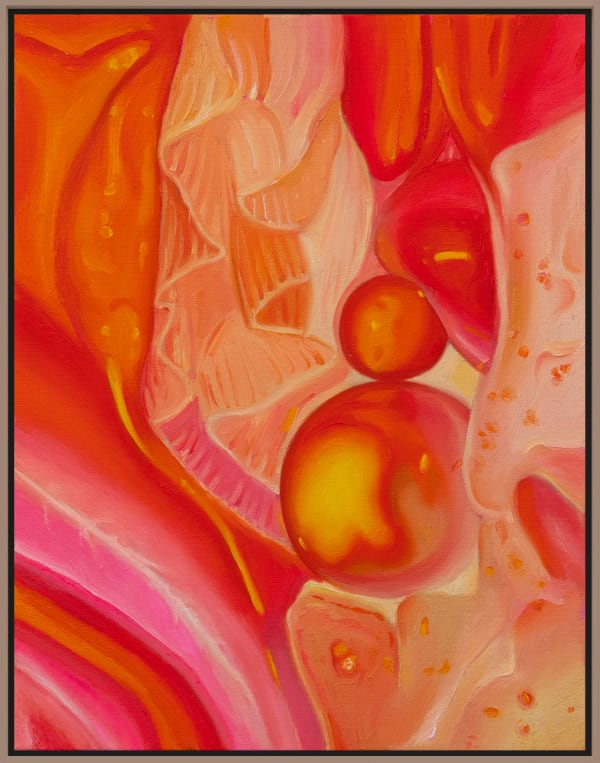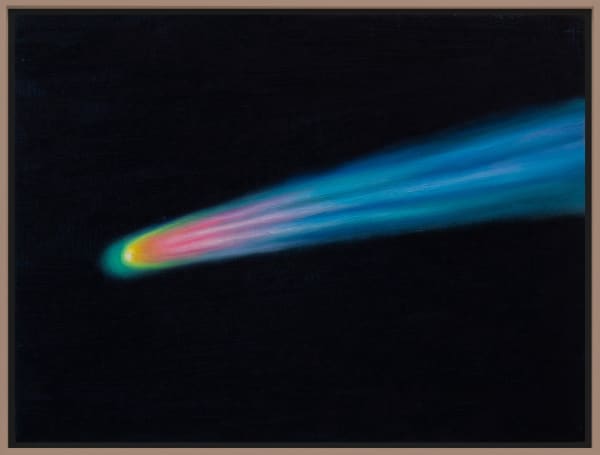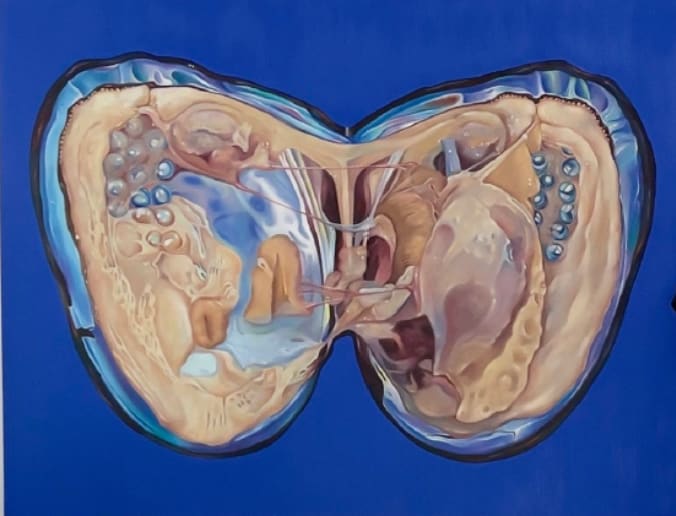-
 Fawn RogersThe Most Beautiful Pearls Are Black, 2021Oil on canvas165.1 x 215.9 cm (65 x 85 in)
Fawn RogersThe Most Beautiful Pearls Are Black, 2021Oil on canvas165.1 x 215.9 cm (65 x 85 in) -
-
Exhibition Film
-
Burn, Gleam, Shine engages with the iconography of the oyster and its loaded, dichotomous connotations of the sacred and profane: a symbol of chastity, fertility, and sacred knowledge, as well as carnal pleasure, decadence and greed.Even the precious pearl, harvested and cultivated for millenia, is the result of an irritant, a corruption of the oyster's pith. Shellfish are dirty – bottom feeders capable of individually filtering 150 liters of water a day – yet prized for their delicacy. And while the oyster embodies all these dualities and tensions, it also destabilizes them completely. For all their associations with the female sexual form, oysters are in fact hermaphroditic, beginning as males and developing into females throughout their life cycle.
-
-
-
Extending from The World is Your Oyster series, these new and recent paintings explore the potent image of the oyster as both a symbol of unbridled sexuality and ecological exhaustion. They feature larger than life sea creatures luridly splayed open, flaunting the nacreous sheen of their inner shells and drawing the eye across the wet crevices of their fleshy folds.
-

Fawn Rogers
Free of God, 2021Oil on canvas
165.1 x 215.9 cm (65 x 85 in) -
Rendered against vivid monochromatic backdrops, they visually echo Barkley L. Hendricks’ liberatory, politically charged portraits from the 1960s, while calling to mind more recent works such as Mika Rottenberg’s NoNoseKnows (2015), an absurdist, feminist critique of the exploitative system that extracts wealth from natural resources and laboring bodies, partially set in a Chinese pearl-making facility.
-

Fawn Rogers
Happy As A Clam #2, 2021Oil on canvas
215.9 x 165.1 cm (85 x 65 in) -
-
Also on view are a suite of more intimately scaled paintings collectively presented as Love Letters to Costanza. Featuring cosmic scenes and shellfish embedded with ethereal figures in hallucinatory, fluorescent palettes, they echo the molluskan forms found in Burn, Gleam, Shine. These love letters, and Rogers’ interest in representations of female sexuality more generally, bridge the oyster works and her publication GODDOG, a multimedia research project tracing the palimpsestic figure of the Venus across history, through which she discovered the 17th century Italian noblewoman and art dealer Costanza Bonarelli.
-
-
-
-
-
-
-
-
Historically, systems of dominance have been achieved through the construction of binary oppositions that favor the oppressor - man/woman, mind/body, white/other and so on. Rogers’ practice, by contrast, situates itself precisely within the tension between these binaries; the / between words providing the trellis upon which her ideas and expression take root and expand.Echoing Carl Jung’s sentiment that only the paradox could come close to comprehending the fullness of life, Rogers is drawn to universal objects, materials, and symbols – such as nails, soil, cars, seashells or teeth – that exist on the threshold of multiple, contradictory meanings. She collects these symbols, using them as footholds to formally and viscerally engage with the hyperobjects1 of our present reality.
-

Fawn Rogers
Neopangea, 2021Oil on canvas
61 x 76.2 cm (24 x 30 in) -
-

Fawn Rogers
Jestope, 2022Oil on canvas
165.1 x 215.9 cm (65 x 85 in) -
-

Portrait of Fawn Rogers holding an oyster. © Fawn Rogers. Courtesy of the artist
-
Subscribe Newsletter
Be the first to know about new exhibitions, artist updates, as well as books and more. Sign up for our newsletter below.
